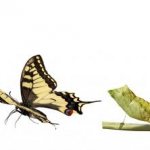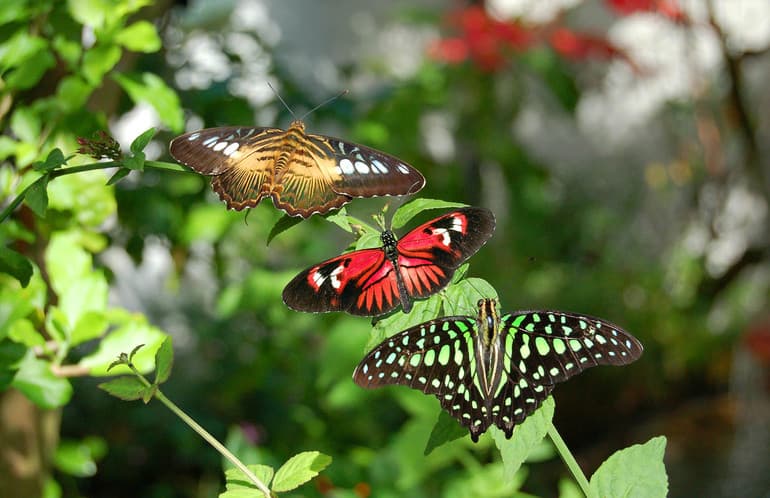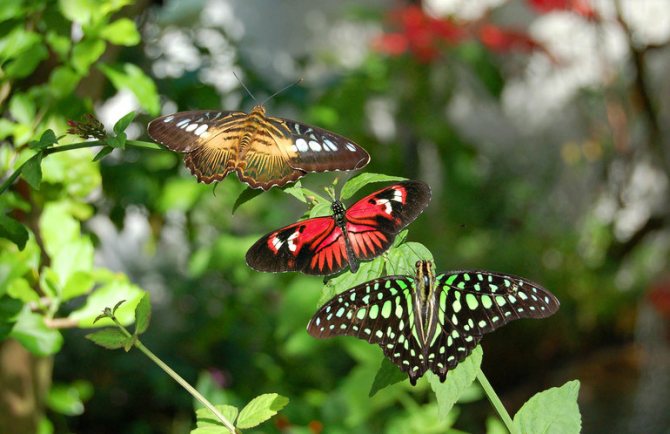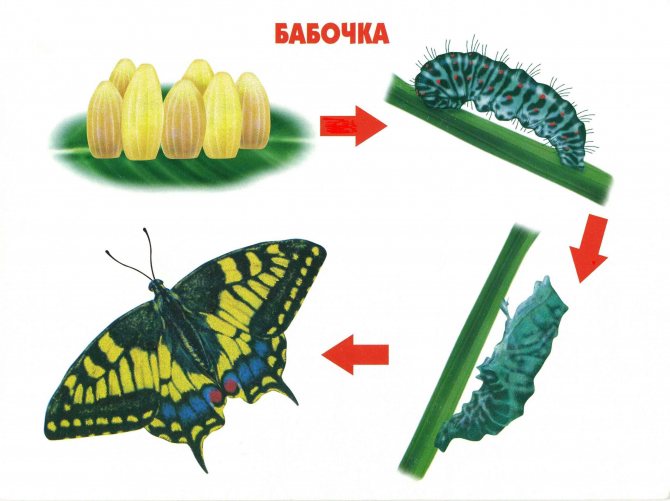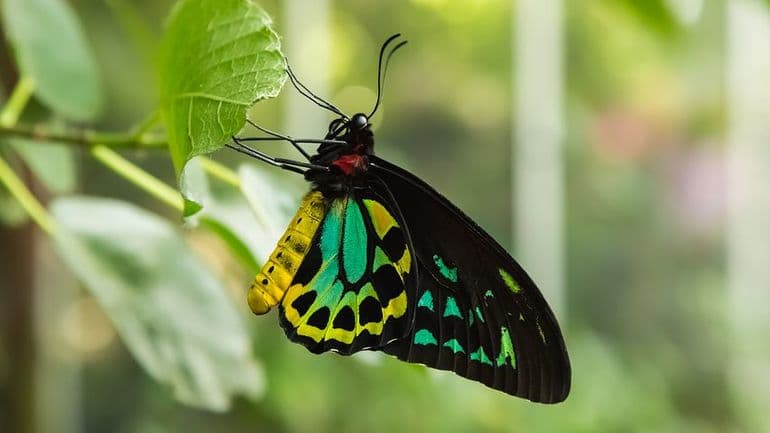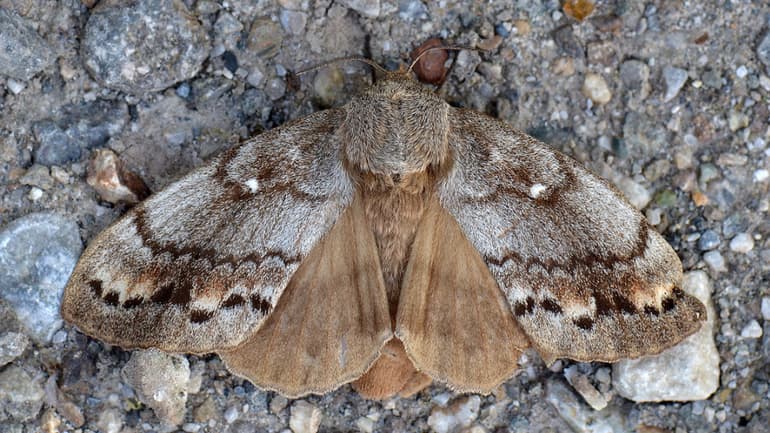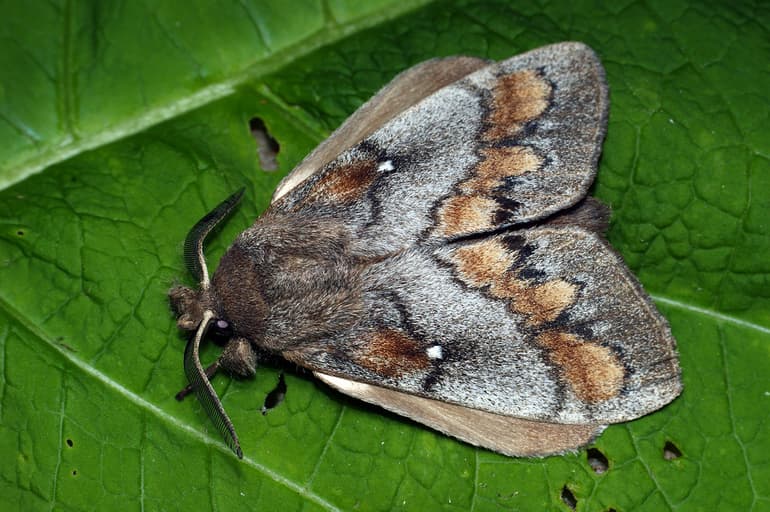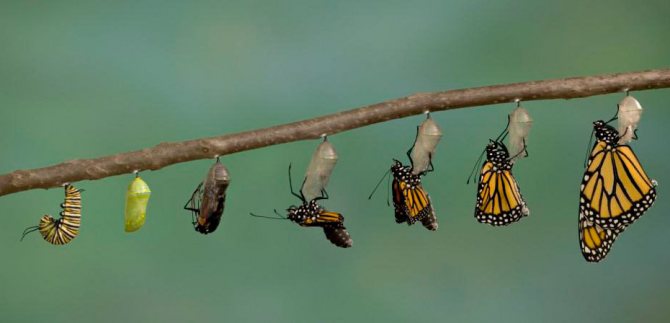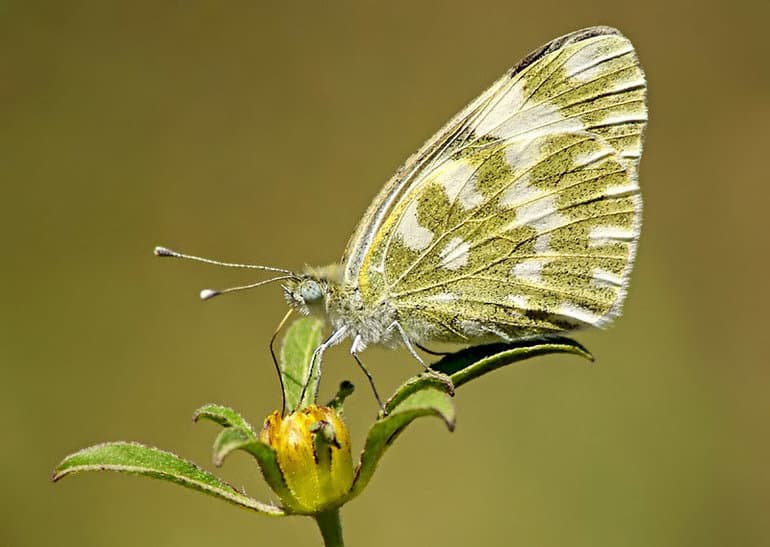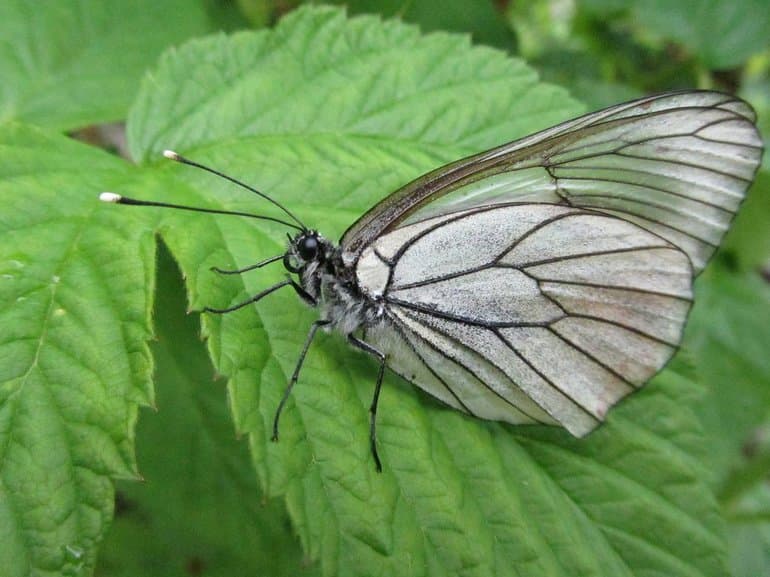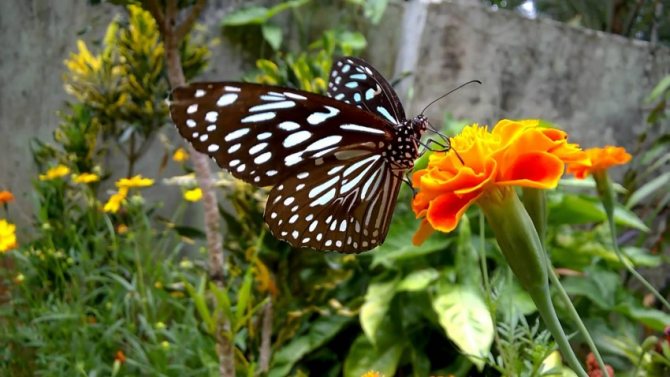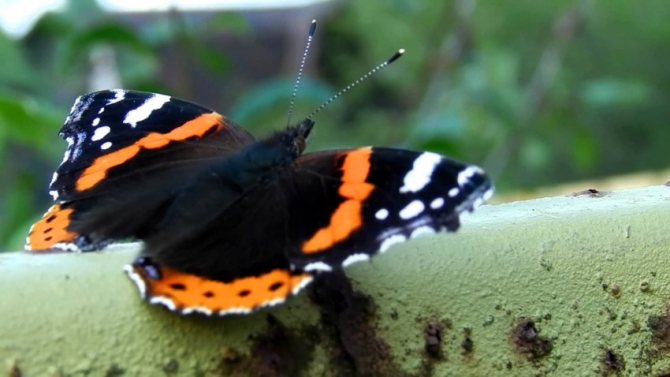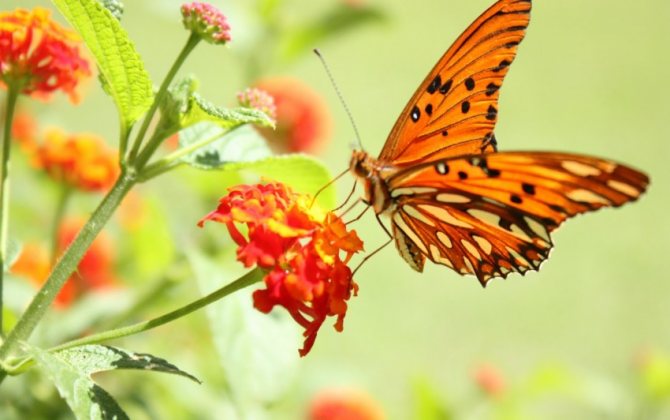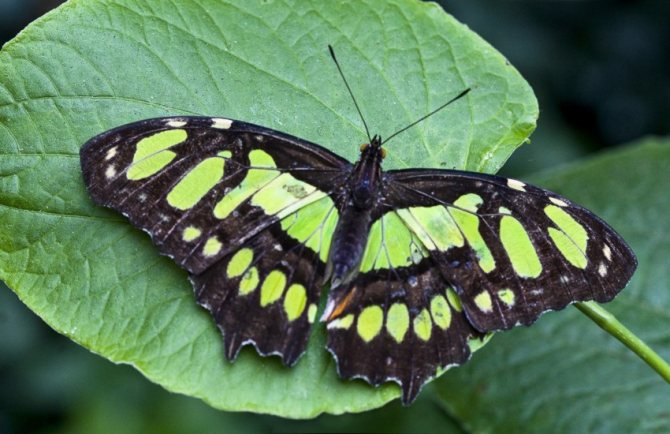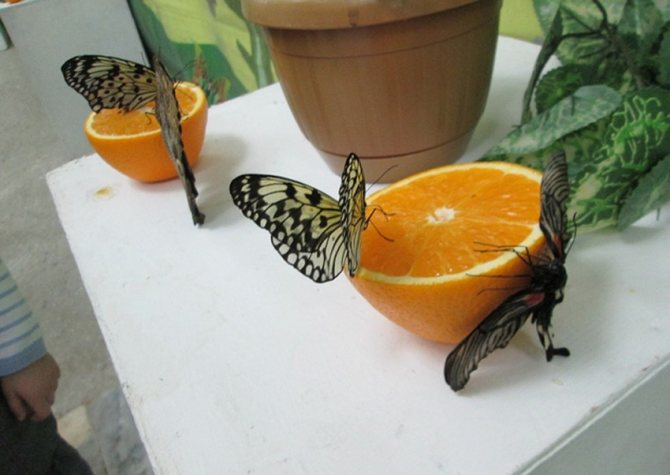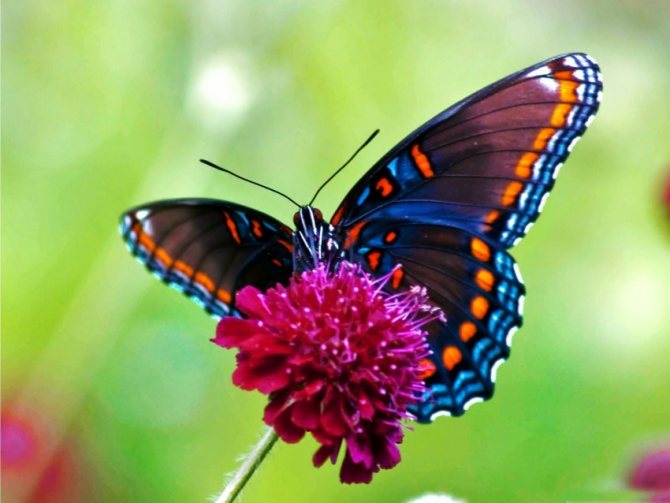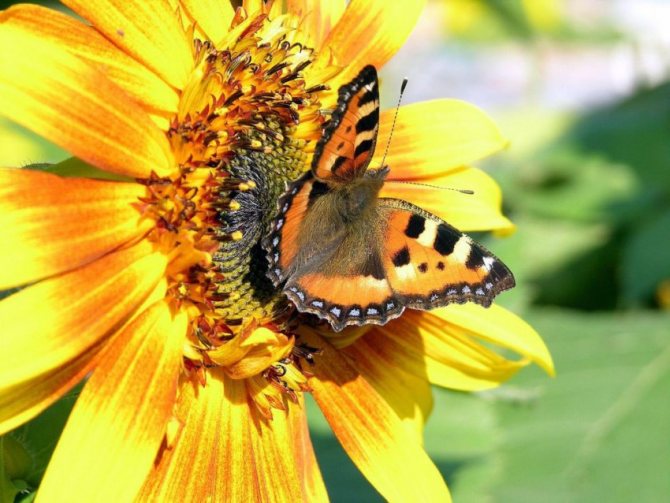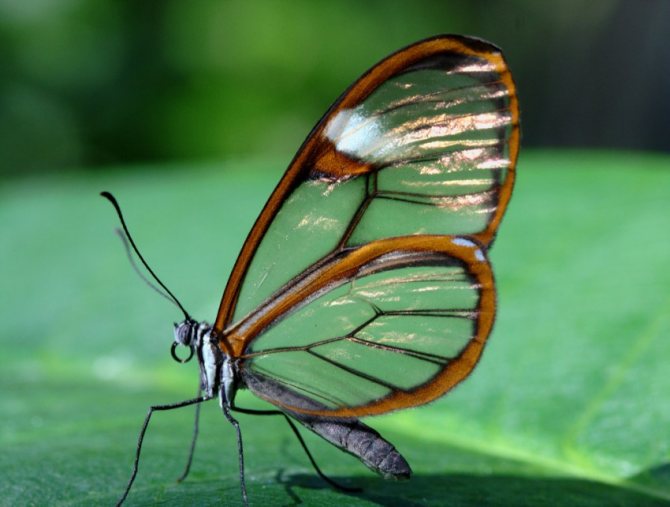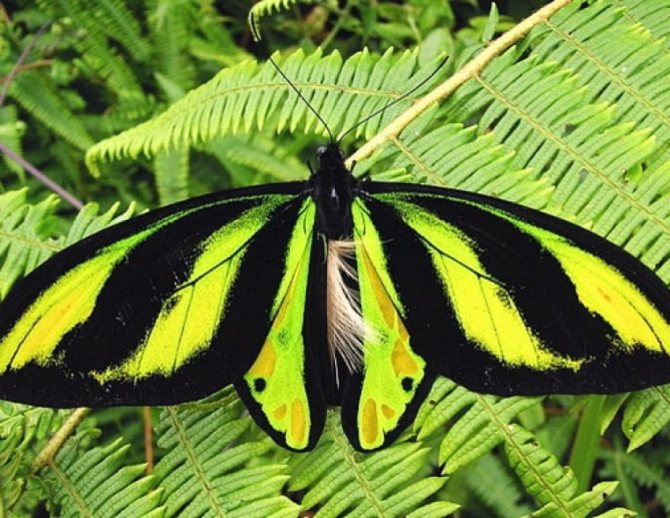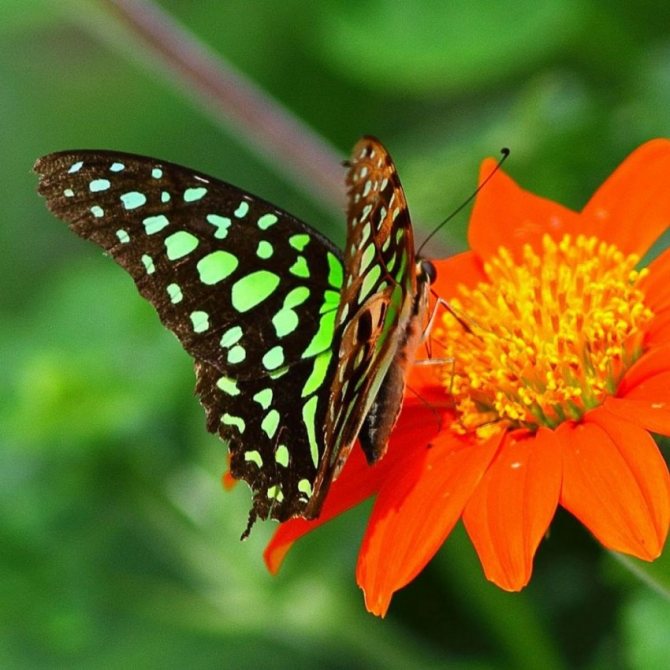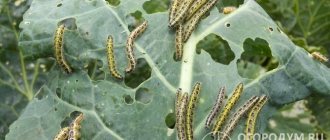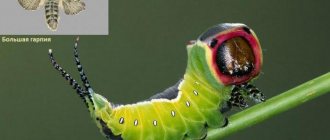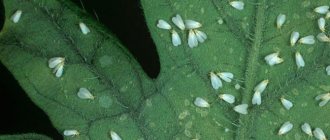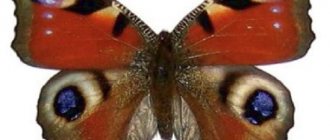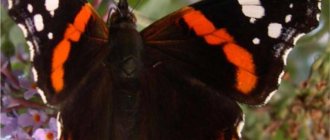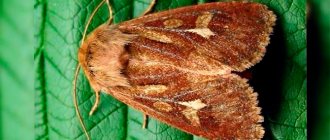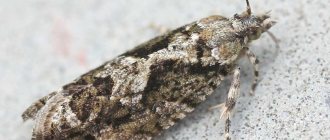Butterflies are Lepidoptera belonging to insects that have a complete transformation cycle. Their distinguishing feature from other representatives of the order is the presence of chitinous scales on the hind and front wings. These elements have the finest optical components, which, when interacting with ultraviolet light, allow you to see a color gamut that the human eye cannot perceive.
To find out how a butterfly develops, you first need to understand what the cycle with complete transformation includes. This process contains the following stages:
- egg stage;
- caterpillar (larva) stage;
- pupal stage;
- the stage of an adult insect (imago).
In the same way as the development of butterflies, other representatives of Lepidoptera - moths and moths - turn into adults.
Butterfly
When the insect is fully formed, it is time to leave the already cramped bed. By the way, the shortest life expectancy in butterflies, depending on the species and, of course, luck is from a couple of hours to several days, during which time some individuals do not even have time to eat, so as not to waste time.
After the cozy cocoon is left, the butterfly sits for some time until the crumpled wings dry out and straighten out under the influence of hemolymph. The warmth of this liquid makes the wings of the insect the way we are used to seeing them - hard and beautifully colored. Now they acquire their permanent color and their graceful owner is ready to search for a partner and reproduce.
By the way, some species go through these stages, from birth to transformation into an adult winged insect, for three whole years, like the Smelly Woodworm, which feeds on hard-to-digest food - wood.
Where does Madagascar Saturnia live?
This amazing insect can be found only in one place on the entire planet, namely on the island of Madagascar.
Saturnia-comet is one of the symbols of the island, it is even depicted on local money - Malagasy Ariari.
The butterfly is endangered, so special farms have been created in Madagascar, where it is successfully bred.
Numerous orders of insects are conventionally divided into two groups. In the representatives of the first group, the larvae that emerged from the egg are similar to adults and differ from them only in the absence of wings. These include cockroaches, grasshoppers, locusts, bugs, praying mantises, stick insects, etc. These are insects with incomplete transformation. In the second group, worm-like larvae hatch from the eggs, not at all similar to their parents, which then turn into pupae, and only after that adult winged insects emerge from the pupae. This is the cycle of development of insects with complete transformation. These include mosquitoes, bees, wasps, flies, fleas, beetles, caddis flies, and butterflies.
Chrysalis stage
The caterpillar's saliva contains a special secret that allows it to harden in the air, forming a silky thread. With the help of this substance, it is fixed on the branch upside down and begins to entwine with its own thread. After the cocoon around her body is gossiped, she sheds again this time completely, her head even falls off.
When the cocoon shell becomes hard, the pupal stage begins
The pupa is immobile, so it is extremely important for it to remain unnoticed.Even in this dormant state, the pupa of some species are able to change the color of the environment, take the shape of leaves, as well as emit a hiss and even move.
In species that do not possess this skill, the pupa is also not easy to find. More often than not, the human eye perceives them as a bud on a tree.
At this stage, the histolysis process takes place inside the hard cocoon, during which almost all caterpillar tissues are destroyed and become liquid, and new ones appear in their place. At this time, the embryos of the organs of the future butterfly are formed from the imaginal discs. On the surface, you can even discern how the wings, legs and trunk of the insect are formed. This is the very exciting moment of the transformation of the caterpillar into a butterfly.
Where caterpillars come from: the life cycle of butterflies
The female lays eggs after fertilization. Under favorable conditions, a larva develops inside. The process takes 2 to 14 days. Upon completion, they gnaw the rim of the egg, crawl out. This is how the caterpillar appears.
The size of the larvae of the first stage is about 1 mm. They are born with a huge appetite, eat a lot, grow quickly. As they grow older, an average of 4 molts pass, but there are species that are reborn up to 16 times. The duration of this cycle depends on the type of insect, habitat. In our area, females have time to give life to two generations, the larva develops for about 6 weeks.
Caterpillars live under the bark of trees, in cereals, grain, under the leaves of various plants. They feed on juices, gain strength. At the adult stage, the moth lives from several days to 20 days. During this time, either does not eat anything, or feeds on plant nectar, juices of berries, fruits.
In conclusion, the larva forms a cocoon from independently produced filaments, turns into a pupa. It clings with its paws to a tree, leaves, freezes. The most mysterious phenomenon begins - the transformation into a moth.
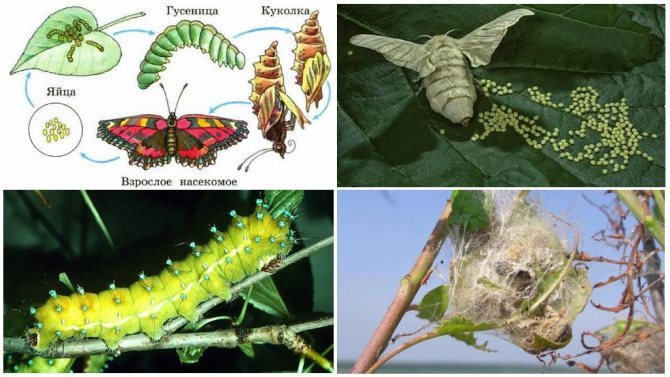
Life cycle of butterflies
The most beautiful insects
These amazing creatures, regardless of where the butterflies live - in tropical forests or in a clearing in temperate latitudes, in the mountains or in the hot African desert, constantly fly between plants and flowers, collecting nectar and delighting people with their original beauty.
The life cycle of a butterfly consists of four stages: an egg, a larva, a pupa, and an adult. Butterflies are insects with a so-called full cycle of transformations, since the larva is completely different from the adult. The transition from one stage to another or transformation is called metamorphosis.
Testicles
- this is the first phase of insect development. The testicles must be preserved intact, so the butterflies take care of this, some lay them in the soil, others fill the testicles with secretions from the glands, which harden in the air - a capsule is obtained, the capsules are usually masked to match the color of the surface. Another method is that insects cover the testicles with hairs or scales that are scraped off the abdomen. The female lays eggs in portions, which can contain several pieces, and can reach hundreds of eggs. Depending on the species, they are arranged in layers, in a line or in a ring around the shoot of the plant, which the caterpillars will feed on. In some species, the female scatters eggs in flight. The development of the embryo depends on climatic conditions and can last from several days to several months, especially when the insect hibernates at the egg stage.
From the testicles emerge larvae - caterpillars
... They actively feed, grow and accumulate substances for the next transformations. The caterpillar has three pairs of articulated legs, armed with claws, and several (up to 5 pairs) false legs, equipped with bunches of claws, which allows it to hold well on the support. Caterpillars of diurnal butterflies are very diverse in color and external structure.They have a gnawing mouth apparatus and, for the most part, feed on the leaves of various plants. Caterpillars grow rapidly. Gradually, the outer covers (cuticles) of the larva become too tight for her, and they need to be replaced. Molting occurs, preceded by a growth period. Most larvae have 5 or even more if the larva hibernates. Therefore, the lifespan of the larva can reach from several weeks to several months, and in woodworms even up to 2-3 years.
At the last molt, the caterpillar turns into chrysalis
... The color and shape of the body of butterfly pupae are no less varied than that of caterpillars. Pupae of butterflies do not feed and do not move, they are usually attached to branches, leaves, various objects (the so-called "belted" and "hanging" pupae), or lie freely on the soil - among fallen leaves and in the soil litter. The duration of the pupal stage can vary from several weeks (in some tropical species) to nine months or more (in those living in temperate climates where winters are long). During this period, organs and tissues change and acquire the features characteristic of adults, wings and muscles are formed.
A butterfly emerges from the pupa. Adult butterfly (imago)
reaches puberty quickly and is ready to reproduce in a few days. Depending on how quickly the butterfly fulfills this main purpose, it lives from several days to several weeks. The exception is wintering butterflies, which can live for more than 10 months.
What is metamorphosis and what is it for?
Metamorphosis, i.e. a life cycle with a series of successive transformations is a very successful acquisition in the struggle for existence. Therefore, it is widespread in nature and is found not only in insects, but also in other living organisms. Metamorphosis allows different stages of the same species to avoid competition among themselves for food and habitat. After all, the larva feeds on other food and lives in a different place, no competition arises between the larvae and adults. Caterpillars gnaw leaves, adult butterflies calmly feed on flowers - and no one bothers anyone. Through metamorphosis, the same species simultaneously occupies several ecological niches (feeding on both leaves and flowers in the case of butterflies), which also increases the species' chances of survival in an ever-changing environment. After the next change, at least one of the stages will survive, which means that the whole species will survive, continue to exist.
Amazing creatures
Caterpillars and their butterflies are not always alike, the color does not correspond to the color of the future moth at all. Some larvae have similar features - specks, streaks of the same color. Only experts and obvious fans of these insects can determine from which caterpillars, which butterflies appear.
Caterpillars of butterflies, photos and names are presented below.
- One of the most beautiful butterflies in our area is the peacock's eye. The larva of this beauty is black with thorns all over its body. The change in appearance is dramatic.
- Other black caterpillars will become hives.
- An amazing creation of bromine. The caterpillar looks like a stick, and the butterfly has a very interesting woody color.
- A green caterpillar with multi-colored pimples is cecropia.
- The black dovetail has an irresistible blue-green color. But on the body of the caterpillar there are also yellow dots.
- Dalcerida. It looks unclear whether an insect or an animal will turn out to be a larva. The moth's appearance is no less unusual.
- Blue morpho is another creature that bewitches with its appearance.
- Swallowtail is a butterfly well known in our area.
- The butterfly used to produce natural silk is the silkworm. She leads a sedentary lifestyle, practically does not use the wings for their intended purpose, despite the fact that their span reaches 60 mm.The larva forms a cocoon of silk threads up to 1500 m long.
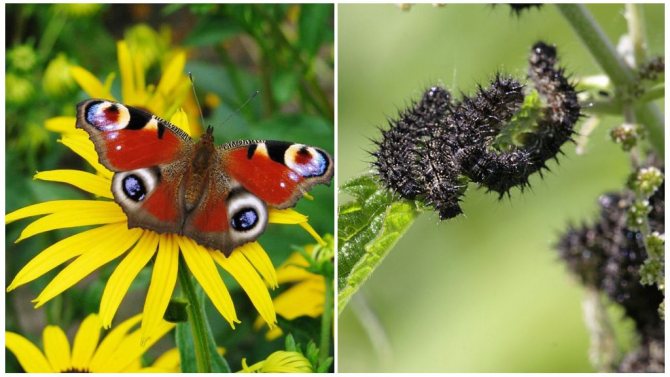

Peacock butterfly and its caterpillar
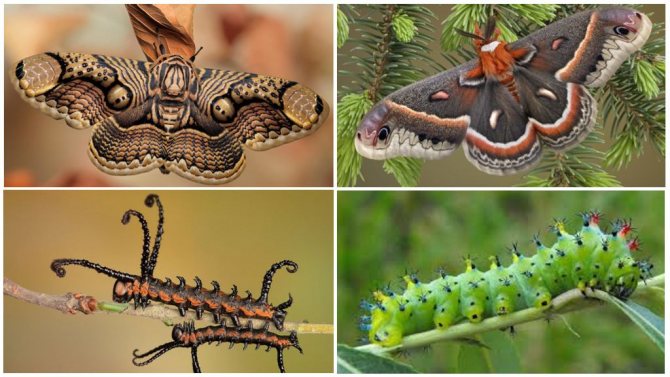

Bramea and its caterpillar on the left, cecropia and its larva on the right
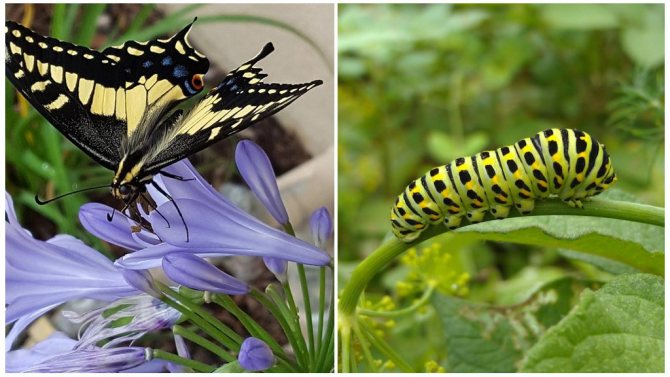

Butterfly black dovetail
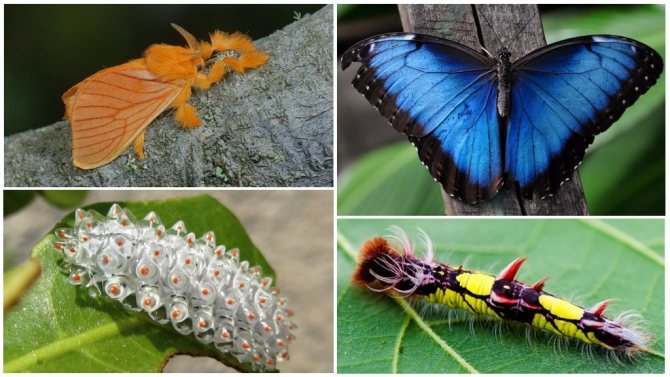

Dalcerida and its caterpillar on the left, blue morpho and its larva on the right
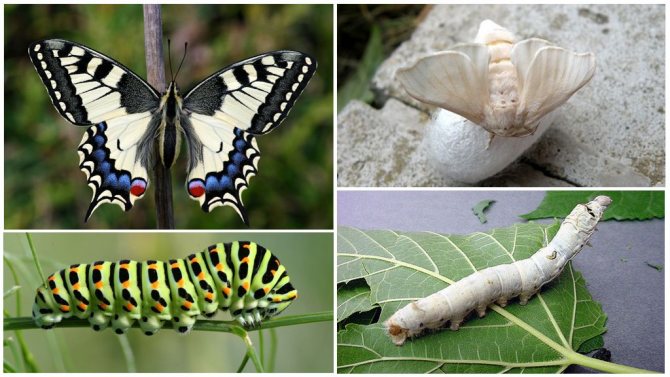

Swallowtail and its caterpillar on the left, silkworm and its larva on the right
Whether caterpillars that have managed to survive to the pupation stage always turn into moths - yes. Reincarnation always happens. However, in nature there are other insects, the larvae of which are similar to a caterpillar, but they are called worms. At the end of the development process, they are destined to turn into beetles, bees, flies, wasps. Sawflies are very similar to butterfly larvae, they are called false caterpillars.
People do not stop admiring some types of butterflies, they keep them in the house, creating favorable living conditions for them.
Description
Large or very large butterflies with large, wide wings. The wingspan of most species of the world fauna is 80-140 mm, some species up to 28 cm (female Peacock-eye Hercules). The body is rolling, densely pubescent. Each wing bears a large discoid “ocellated” spot. In a number of genera, hind wings with lyre-like elongated anal angles, in the form of tails, are supported by elongated and curved veins M3, Cu1, Cu2, and A2. Antennae are feathery, with two pairs of outgrowths on each segment; in females, outgrowths are much shorter than in males; less often, the antennae of females are comb-like. The oral organs are reduced: the proboscis is underdeveloped or absent; labial palps well developed, straight or slightly curved upward and protruding in front of the forehead, rarely very small and barely noticeable. Shortened legs; tibiae of hind legs with 2-3 spurs.
Twilight and nocturnal butterflies, males are more active, in some species they fly during the day. Males have an exceptional sense of smell, with the help of which they are able to find females by the pheromones they emit at a distance of up to 1 km or more.
Caterpillars are large, densely covered with long hair-like bristles, less often glabrous with bright warts with serrated serrated spines and bristles. Caterpillars, as a rule, are polyphages, less often trophically associated with several closely related plant species. They develop mainly on deciduous trees and shrubs, some species only on conifers. Pupate in coarse-celled or dense silky cocoons. In the temperate zone, they give one generation a year. Some Saturnia cocoons are used to produce natural silk.
The publication
The mystery of how the caterpillar turns into butterflies makes scientists study, shoot and record this moment every time for curious children and adults.
Usually, the moment of birth of a beautiful insect occurs at sunrise, when it is still not hot, and there is dew on the plants. The cocoon literally bursts, as if a ripe fruit, and a new creature is gradually selected from it, this caterpillar turns into a butterfly, the pictures clearly show this.
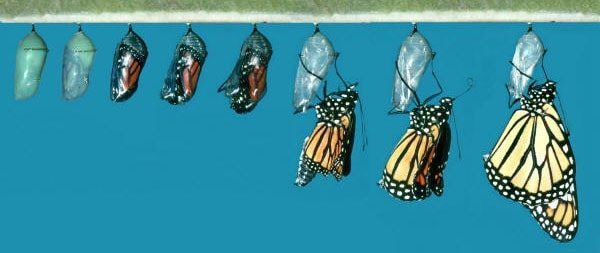

After the caterpillar turns into butterflies, its "priorities" in life change. If at the larval stage the main need for its existence was food, now the insect's goal is to continue its genus and start the cycle again. The first thing a new creature does is find a partner for fertilization.
We suggest that you familiarize yourself with: Destruction of cockroaches with hot fog
Butterfly
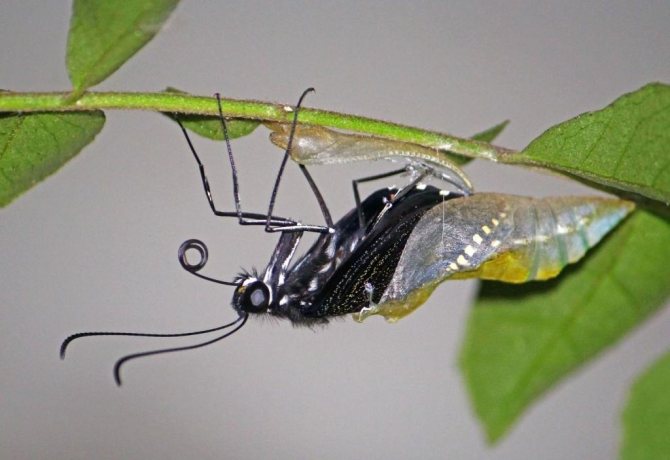

How are butterflies born? Cocooning butterflies, to get out, can punch their way, disentangling themselves from the threads. Sometimes they secrete a special liquid that will thin the silk threads. An ordinary chrysalis simply cracks, and a butterfly gets out of it. Immediately after emergence, the wings of the insect are shriveled and tender. To straighten them, the butterfly looks for a special place. She hangs from a leaf or branch and dangles her wings.After that, the butterfly begins to fill them with lymph, due to which they straighten out. If the butterfly does not have time to quickly get out of the cocoon, or it will have nowhere to spread its wings, they will soon dry out, and such an insect will no longer be able to fly.
Usually, butterflies emerge from the pupa in the early morning when humidity is high. It may take several hours for the wings to grow stronger. After that, she is already able to fly. The butterfly takes off and starts looking for a mating partner.
Thus, we looked at how butterflies are born. Their life cycle amazes minds with its complexity and unusualness. After emerging from pupae, butterflies do not live long. With their beauty, they delight the human eye for only a few days, and then they die.
Butterfly during pregnancy what is it?
What is this mysterious butterfly symptom? It is necessary to understand in more detail to avoid confusion, since pregnant women very often confuse the words "symptom" and "syndrome". Butterfly syndrome is a very rare disease that is transmitted at the genetic level from parent to child. The course of the disease is characterized by the appearance of redness on the face of the child, especially in the area of the cheekbones and nose. It can manifest itself only in people who have already been born, but not in the embryo. People suffering from a similar disease have very fragile skin and mucous membranes, which are damaged at the slightest touch, causing severe pain to the patient. Most often it occurs in children born from the union of close relatives.
Therefore, do not worry, because during pregnancy, the disease is not possible to identify, and, most likely, during a personal conversation with a woman, the doctor could simply make a reservation and call the symptom a syndrome. If it seemed to the pregnant woman, then the best solution is always to simply ask again.
As for the butterfly symptom, this is the term from gynecological therapy, most often used in the early stages of pregnancy. The symptom is observed during the first 28 weeks of fetal development and is considered a sign of normal and even development of the brain in a future person.
Diagnostic protocol
Deciphering the ultrasound scan during pregnancy helps to determine the parameters and indicators that characterize the development of the baby in the womb at different times. Using special tables, the uzist doctor will decipher the embryo diagnostic protocol. The size of the unborn child with such a study can be established using the following indicators:
- BPD - biparietal diameter - the size between the temples of the child;
- HC - baby's head circumference;
- CRL is the length of the embryo, which is determined by the distance from the coccyx to the parietal part. With the help of this indicator, the doctor will be able to determine the exact duration of pregnancy.
- FL is the length of the femur bone.
Deciphering the ultrasound scan helps to establish the volume of amniotic fluid. If there is a deviation from the norm, this may indicate various violations, such as:
- intrauterine infections;
- disorders in the nervous system of the embryo;
- disorders during the formation of the kidneys.
Deciphering the diagnosis of the fetus is a very important process, since the study can tell about the intrauterine growth retardation of the baby.
This ailment manifests itself in the following forms:
- Symmetrical. All parts of the embryo's body are smaller than the size that should be in a certain period.
- Asymmetrical. The doctor can make such a diagnosis when the head, arms and legs of the embryo are developing within normal limits, and the trunk is much less than normal.
The condition of the placenta is an indicator that doctors pay increased attention to. Deciphering the ultrasound scan allows you to determine the following parameters of the "child's place":
- thickness;
- degree of maturity;
- developmental state;
- features of its attachment.
Deciphering the ultrasound protocol during pregnancy will help the medical professional draw the correct conclusions about the presence of various diseases of the baby.
Ultrasound examination can reveal such abnormalities in the development of the fetus:
- Accumulation of cerebrospinal fluid in the skull.
- Complete absence of the brain. This diagnosis is incompatible with life, and leads to termination of pregnancy.
- A hernia of the spinal cord, which threatens the normal growth dynamics of the brain and spinal cord.
- Fusion of the duodenum. You can get rid of this anomaly immediately after the birth of your child with the help of an operation.
- Heart disease.
- Syndrome of "sun babies". This ailment is accompanied by a delay in the mental development of a person.
Such a method as ultrasound diagnostics allows doctors to provide qualified medical care in a timely manner, if any defects are detected even at the stage of the growth of children in the womb. Indeed, with the help of this method, gynecologists manage to increase the number of successful births.
A butterfly is a bright and beautiful insect with large multi-colored wings that flutters all summer from flower to flower, helping to pollinate it. But where the butterfly lives, where it sleeps, what it eats, how it spends the winter months - the answers to these questions will be of interest to every curious person.
What is a butterfly on an ultrasound scan during pregnancy
The name "butterfly symptom" was derived from the comparative similarity of the correctly developing cerebral hemispheres with the rounded wings of this insect. Its presence in ultrasound diagnostics helps doctors identify pathological diseases in an unborn child. Some very suspicious expectant mothers try to avoid this rather simple procedure, because they believe that its passage will negatively affect the health of their baby. And in vain! Sometimes ultrasound diagnostics is the only solution at the present stage of development of medicine, during the passage of which doctors will be able to identify pathology in the intrauterine development of the fetus in time.
- In this article, we will look at breeding and stages of development of butterflies.
Butterflies reproduce sexually, which means that the male must fertilize the female before laying eggs. - When, some differences are clearly noticeable between them: among some species, the females are larger than the males, and they differ in the coloring of the wings (some sharply, and some not so much).
Purposes of the ultrasound method
The gynecologist, in whom the woman is observed in the position, determines how many times she needs to do ultrasound diagnostics of the unborn baby. The goals of the ultrasound scan are different, depending on how long they are carrying the fetus. Usually, the number of mandatory procedures does not exceed five times:
- At a period of five to seven weeks - to determine pregnancy. And also the procedure is carried out in order to determine exactly whether the child is in the uterus or its posture.
- Early in the second trimester. At this time, the dynamics of the baby's growth, the state of the placenta, are assessed. Also, this procedure is carried out to exclude malformations of your child. Starting from the second trimester, using an ultrasound scan, you can determine whether your child is developing normally by his heartbeat. Also, ultrasound examination can show that there is not one child in the womb, but several. This time is optimal in order to identify the pathology of an unborn child in the early stages. It is at the beginning of the fourth month of pregnancy that such a genetic abnormality as the syndrome of "sunny children" can be determined.
The reasons for the appointment of additional research:
- lower abdominal pain;
- The presence of bleeding;
- abnormalities in the development of the fetus;
- more than one embryo;
- pathology of maturation of the placenta.
Classification
There are different types of caterpillars. This is primarily due to the diversity of the Lepidoptera themselves. Interestingly, the coloration of the larva does not always correspond to that of the adult.One of the classifications by which caterpillars are identified is based on what they eat.
- The group of polyphages is represented by their representatives completely indiscriminate in food, which can be consumed by any plants. These include moths, for example, wine hawk moth, ocellated hawk moth, blind hawk moth, kaya bear, moths, peacock eyes and others.
- The group of monophages includes caterpillars that feed on only one specific plant species. These are cabbage, apple moth, silkworm and some others.
- The group of oligophages includes those who feed on a certain type of plant, they represent one family or type. These include: swallowtail, pine scoop, polyxena and others.
- Xylophages are caterpillars that feed on wood or bark. This group is represented by leaf rollers, woodworms and others.
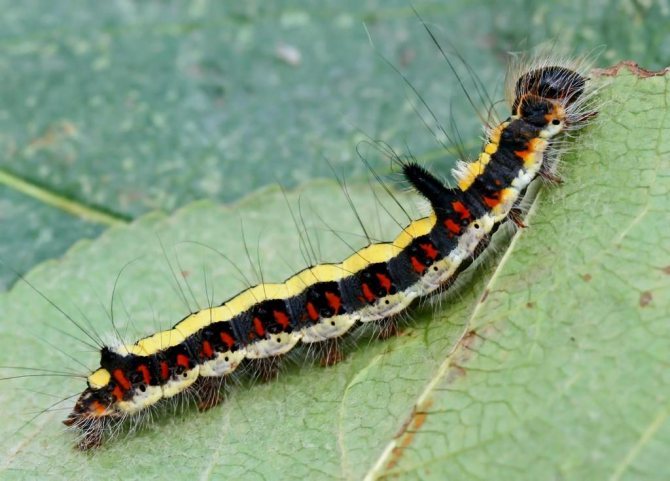

Reproduction of butterflies
The shape and color of the wings is of great importance for the reproduction of butterflies. Some species are sexually dimorphic: males and females differ in appearance, which makes it easier for Lepidoptera to find a partner. Other species use pheromones to attract couples. Depending on the species, either males or females can attract a mate in this way. The mating dance is also characteristic of butterflies.
Mating takes place on plant leaves or on the ground. It can last from 20 minutes to several hours. By fertilizing the female, the male not only transfers his seed, but also components that are useful during pregnancy. Some species have an interesting feature: after fertilization, a chitinous appendage appears on the female's abdomen, which excludes the possibility of re-mating.
The mating process of charitonium heliconides is interesting. The female begins to emit pheromones several hours before leaving the pupa. Males flock to her and begin to fight with each other. The victorious male fertilizes the pouch at the moment of its emergence from the pupa.
After fertilization, the female lays eggs. This is how butterflies are born. In the tropics, some species can give up to three generations in one year.
Interesting Facts
The origin of the word "butterfly" in Orthodox countries originates from the words "old woman" or "grandmother", tk. Since ancient times, people have represented these insects as the souls of dead people. This belief still exists in the villages and hamlets in the Russian provinces.
The largest butterfly is the South American tropical scoop or tizania Agrippina, its wingspan is 28 cm, in Russia it is the Maak sailboat (up to 13.5 cm). The smallest is a baby moth living in the Canary Islands, its size barely reaches 2-4 mm.
A butterfly, flying from flower to flower, is able to cover the path in 1 hour to 10 km, thus moving to the place where it will lay its eggs.
One of the most amazing butterflies - Greta - amazes with its transparent wings, through which the entire surrounding world shines through.
Types of butterflies
The color of the wings of butterflies is varied. In some, they are beautifully and brightly colored, while in others, on the contrary, they have a modest patronizing color, which allows them to be invisible on flowers and grasses, tree bark, stones, lichens. Many species are characterized by sexual dimorphism, that is, a pronounced external difference between the male and the female in the color, shape and size of the wings, as well as in the structure of the antennae. Occasionally, there are separate, atypically colored individuals called aberrants.
Gynandromorph butterflies, that is, individuals that combine the characteristics of a male and a female, are extremely rare. The gynandromorphs of the species, which are characterized by pronounced sexual dimorphism, look very unusual. In this case, on one side of the butterfly's body, wings are located with the color of the male, and on the other, with the color of the female.
Most butterflies are active at dusk and at night, while a much smaller number of species are active during the day. However, it is the diurnal butterflies that are the most visible and, as a consequence, the best studied.Many butterflies are good flyers, some species are characterized by regular migrations, which often determines their wide distribution. Others, on the contrary, inhabit only small geographic regions, such species are called endemics.
Preview:
Research
"Miraculous transformation of a caterpillar into a butterfly"
I wanted to touch with my hands To the most beautiful flower, and he, waving his petals, Fluttered and flew away under the clouds!
T.Nesterova
Relevance
Butterflies are the most beautiful insects on Earth. They are like flowers come to life. In our country, you can find truly beautiful butterflies, endowed by nature with wonderful patterns or unusual shapes. It is also interesting that the butterfly turns into such a beauty from an unattractive caterpillar. For a long time, scientists could not understand that a caterpillar and a butterfly are one insect. Only in the 17th century was it scientifically proven that caterpillars are a stage in the development of a butterfly.
I wonder if I can get a butterfly out of a caterpillar at home?
Purpose: to find out if it is possible to grow a butterfly from a caterpillar at home.
Tasks:
- Find information in encyclopedias and the Internet about the birth of butterflies.
- Find out what conditions are necessary for turning a caterpillar into a butterfly at home.
- Determine the type of butterfly by its caterpillar and find information about its life.
- To conduct an experiment.
Research methods:
- Get information from encyclopedias.
- Get information from the Internet.
- To conduct an experiment.
Hypothesis: suppose that at home it is possible to transform a caterpillar into a butterfly.
What i learned
From encyclopedias, I learned how a butterfly is born. Butterflies lay their eggs on plants. A caterpillar hatches from each testicle. Small caterpillars have strong jaws and immediately begin to eat leaves. When feeding, caterpillars grow. Their shell can stretch, so they form a more spacious new one under the old one, which bursts.
When the caterpillar sheds the penultimate shell, the new one hardens, a pupa is formed. Inside there is a transformation of the larva into an adult.
When the hard shell bursts, the back, head, legs gradually appear from it. A transparent cover remains from the pupa. The butterfly creeps out. She rests a little, until the soft wings spread out and get stronger. The whole process of change is called metamorphosis.
The four stages of butterfly development
From encyclopedias and the Internet, I learned what conditions are necessary for the transformation of a caterpillar into a butterfly. If you find a caterpillar, be sure to take the leaves that the caterpillar was on. Place it in a jar, tie it with gauze. Leaves should be kept fresh, and droppings should be removed - a source of caterpillar diseases. The dwelling should be protected from direct sunlight. When the butterfly gets out of the pupa, it will need to spread and dry its wings. Otherwise, the butterfly cannot fly. To do this, you need to put the twigs vertically in the jar in advance.
We found a caterpillar on a carrot bed. It was necessary to find out which butterfly this caterpillar is. The information was found on the Internet. It was a Machaon caterpillar. Machaon caterpillars feed on various wild plants of the umbrella family, but are often found on carrots and dill grown by humans.
Swallowtail is a butterfly that belongs to the Sailfish family (Papilionidae) and is considered one of the most beautiful in our mid-latitudes.
Experiment
On September 27, 2020, we brought a caterpillar found on carrot leaves home. Put it in a jar, put carrot leaves. The caterpillar was crawling in the bank, behaving actively. We gave her
fresh leaves.
On September 29, we found that the caterpillar was located vertically on the bank and did not crawl, it was hiding. Her head was tucked slightly down.From the Internet, I learned that in the front of her head, from below, she has a "spinning machine", with the help of which
she makes a silky bedding.
On September 30, instead of a caterpillar, we saw a green pupa, which was attached to the bank, was in an upright position. The chrysalis was motionless. We began to wait for the birth of the butterfly.
And on November 15, 2020, in the morning, we found that one shell remained of the pupa, and the butterfly, spreading its wings, sits at the top of the can. It was the Swallowtail butterfly. A wonderful transformation has taken place.
By lunchtime, we released it from the can, brought it to the window. Soon she began to make the first flights.
In a plastic container, we mixed honey in water. They planted a butterfly in a container to satisfy hunger. The butterfly spent most of its time on the flower. In the following days, she flew in the house, sat on the curtains, windowsill, places where there is more light and warmth.
Output
Using information from encyclopedias and the Internet, I managed to get the butterfly out of the caterpillar. The experiment confirmed our hypothesis that the transformation of a caterpillar into a butterfly is possible at home, subject to the necessary conditions.
Conversion process
How long the caterpillar turns into a butterfly, being in a cocoon, depends on the climatic conditions, the type of insect. From a few days to 14 years. Moths in our area appear on average after 15 days.
What is the name of the process of transformation of the caterpillar - metamorphosis. More precisely - holometamorphosis, since some parts remain from the larva. In this case, the legs. Experts understand by this term a complete rebirth of forms. Just like melting a plastic bottle, then making a glass.
In a cocoon, seemingly completely immovable, complex processes take place inside. The body splits, turns into a liquid mass with imaginal discs. To make it clearer, this is a semblance of stem cells, and any organs and tissues can be formed from them.
Upon completion of the process of transformation from a caterpillar into a butterfly, the formed insect secretes a special secret, which allows the walls of the cocoon to split. The head is shown initially, then the body, legs. A newborn insect sits motionless for several minutes, waiting for its wings to dry. Then he straightens them, proceeds to search for the opposite sex for mating.
Butterfly structure
The body of a butterfly consists of three sections - the head, chest and abdomen, which carries the internal organs.
The head bears antennae, palps, compound faceted eyes and mouthparts. In the overwhelming majority of butterflies, the sucking mouth organs are a thin long proboscis tube, which at rest is coiled. Many butterflies have an underdeveloped mouth apparatus and are thus unable to feed, subsisting on the energy reserves accumulated during the caterpillar stage.
Antennae of butterflies are the organ of smell and are of various shapes - filamentous, clavate, feathery, comb and others. The sense of smell of some butterflies is very developed; males of such species are able to catch the smell of a female at a considerable distance.
The chest of butterflies carries three pairs of articulated legs and two pairs of wings, while females of some species have underdeveloped wings or even wingless, and in some species also legless. The patterns on the wings of butterflies form the scales covering them, hence the scientific name of the order - Lepidoptera.
Peacock eyes
Not to be confused with the daytime peacock eye.
| Peacock eyes | ||||||||||||||||||||||||||||||||||||||||||||
| Entomological collection of peacock eyes | ||||||||||||||||||||||||||||||||||||||||||||
| Scientific classification | ||||||||||||||||||||||||||||||||||||||||||||
intermediate ranks Domain:
| ||||||||||||||||||||||||||||||||||||||||||||
| International scientific name | ||||||||||||||||||||||||||||||||||||||||||||
| Saturniidae Boisduval, 1837 | ||||||||||||||||||||||||||||||||||||||||||||
| Subfamilies | ||||||||||||||||||||||||||||||||||||||||||||
| ||||||||||||||||||||||||||||||||||||||||||||
Peacock eyes, or saturnia, or ocelli (lat. Saturniidae), are a family of Lepidoptera. More than 2300 species.
Reproduction
Having found a partner, after successful mating, the butterfly lays eggs in order to start a new circle of life. To do this, she chooses the most suitable plant that will suit the taste of her future babies - caterpillars and makes a clutch of eggs. Clutches can be from one hundred to one hundred thousand eggs.
When new caterpillars are born, they will begin their meal from the leaf on which they were born, gradually spreading to other green parts of the plant. If their population is too large, then they can become a real disaster for green spaces and crops of grains and vegetables.
And who would have thought that such a beautiful creature like a butterfly comes from such an unattractive larva.
Thursday, 12 Jan 2012
Caterpillar is a larva of insects from the order Lepidoptera, or butterflies. Caterpillars are similar to caterpillars - sawfly larvae (a group of families from the order of Hymenoptera). Unlike caterpillars, in sawfly caterpillars, the abdominal legs are developed on the II - X segments of the abdomen.
Butterflies never eat. And this is true for some species of butterflies, and the reason for this is the process of its transformation from a caterpillar. During her life, the female lays from 100 to several thousand eggs. She tries to place them on those plants that will be useful for her offspring. If only one such plant grows in the district, then it is on it that she will lay her eggs!
These eggs hatch into tiny, worm-like larvae called caterpillar larvae. They begin to eat and grow, during which time their skin has time to peel off several times. All that caterpillars do during this period is eat and eat, stocking up for the next life when they turn into butterflies. Food is deposited in the form of fat, from which wings, legs, suction tubes and everything else that distinguishes a butterfly from a caterpillar are built.
At a certain moment, the caterpillar feels that the time has come for a change, then it weaves a small cocoon around itself, its head falls off and the caterpillar skin is shed, after which a pupa appears. Then she pierces the cocoon with a sharp needle at the end of the torso.
The pupa can sleep for weeks or months. However, at this time, changes take place in it, so that it comes out as a fully formed butterfly, but at first it does not fly. She sits for several hours, spreading her wings, waiting for them to dry and get stronger. She waves them until she is sure she is ready to fly - after which she makes her first flight.
Video showing how a caterpillar turns into a butterfly in 7 days
Similar articles:
- Nightingale and butterfly
Made and sent by Anatoly Kaidalov ._____________________ THE SNAKE One, already warm, spring morning, the Snake was born, at ... - Blue Dwarf Butterfly The size of the smallest butterfly in the world is surprising. Don't be lazy, take a ruler and ...
- A butterfly lives one day There are amazing butterflies in the world - mayflies. This order has more than 3000 species of insects. IN…

